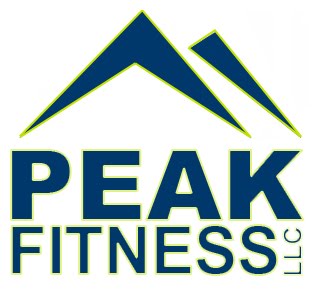
When it comes to personal training or group fitness classes, the assumption is that every session is an investment in self improvement.
Whether this means improved speed and agility, improved muscle tone or simply looking better in a certain outfit, every exercise, rep and set should somehow bring you closer to your goal.
Some of the question I ask myself when putting together each program is:
- How does this exercise or sequence fit in to the clients specific goal?
- How can this workout be progressed from month to month?
- What is the risk to benefit ration of each exercise?
- How can this workout be progressed from month to month?
Unfortunatley what I see far too often are workouts and exercises which vary from pointless and repetitive to ridiculous and dangerous.
While a fitness program can be done a thousand ways, there are certain ingredients which are necessary to achieve physical change (assuming your goal is fatloss).-- And then there are things which have no purpose, but seem to be included anyway.
With this in mind, this article will touch on both the good and the bad and what to look for in your next workout with your trainer/bootcamp:
1. Poor exercise order:
One of the first things I look at when judging a fitness program is how the exercises are sequenced. When it comes to fatloss, this order generally begins with the most stressful and demanding exercises (think full body and/or heavier strength training) followed interval or metabolic circuits which involve bodyweight or lighter weights.
Because exercises such as bicep curls and tricep extensions only work small muscle groups, they can be finished off quickly and more effectively at the end of a workout involving full body exercises.
Conversely, performing these exercises in the beginning would impact the ability of the arms and legs to squat, push and pull in lifts which have a greater carry over to your physique.
2. Poor Risk to benefit ratio:
While bicep curls in a workout are annoying enough, rarely do they involve hurting anyone. The same cannot be said for the following:
- Repetitive jumping, overhead pressing
- Barbell squatting or deadlifting extremely heavy weight (think weight exceeding that of your body)
- Pulled heavy weight with a rounded back
- Olympic lifting in populations over the age of 30
- Long distance running (2+ miles) during a session.
And the list goes on and on. Contrary to popular belief, your back, knees, shoulders, wrists, etc should NOT hurt after each session.
A high injury rate in any personal training or group exercise setting is a direct reflection of the exercises selection—and faulty judgment by the trainer.
3. Not including corrective work in each session:
The purpose of strength/metabolic training is to create a metabolic disturbance sufficient to require physical adaption and change. In lamens terms, this means your muscles are likely to get at least somewhat sore in the process of getting fit.
With this in mind, a crucial element of any fitness program is pre-workout stretching and mobility work along with corrective exercise.
In our case, our athletes/clients are issued a pre-workout routine and asked to arrive 10-15 minutes ahead of time to prepare themselves via stretching and foam rolling.
Because most of us are desk bound during the day (like myself as I write this article), we also include some basic corrective work at the end of each session to keep the stabilizer muscles of the hips, upper back and core healthy and active.
4. Not de-loading every 3-4 weeks:
While some injuries can occur from acute trauma such as lifting heavy weight or twisting the knee, the most likely cause of pain and long term trauma is chronic overuse.
For example, if your knees begin hurting after several weeks of working out, this is the body’s way of telling you to take it easy for a bit.
The reason this is important is a concept known as super composition—which states that the body will undergo a short decrease in performance following an intense workout.
During this time, it requires rest and recovery to rebuild a stronger (or leaner) version of the muscles you broke down. This also explains why figure competitors and elite athletes stop training all together anywhere from 1-2 weeks before their event.
In a personal training or bootcamp setting, this is done by setting up weeks which are more intense followed by recovery weeks involving more mobility, single leg and core training.




Well said spotter. I agree with the de-loading part especially. I feel that there have been times in my life that I would work out, and being as stuborn as I am, I would over do it. Tearing the body down only produces benefits if you let it recover stronger than it was before. I also think that you can over do it in a single session as well. It seems that one hour of intense training has been good to limit myself to. Anything above this is overkill and does more harm than good. With that being said: go hard!! It only takes an hour or less!!
ReplyDelete